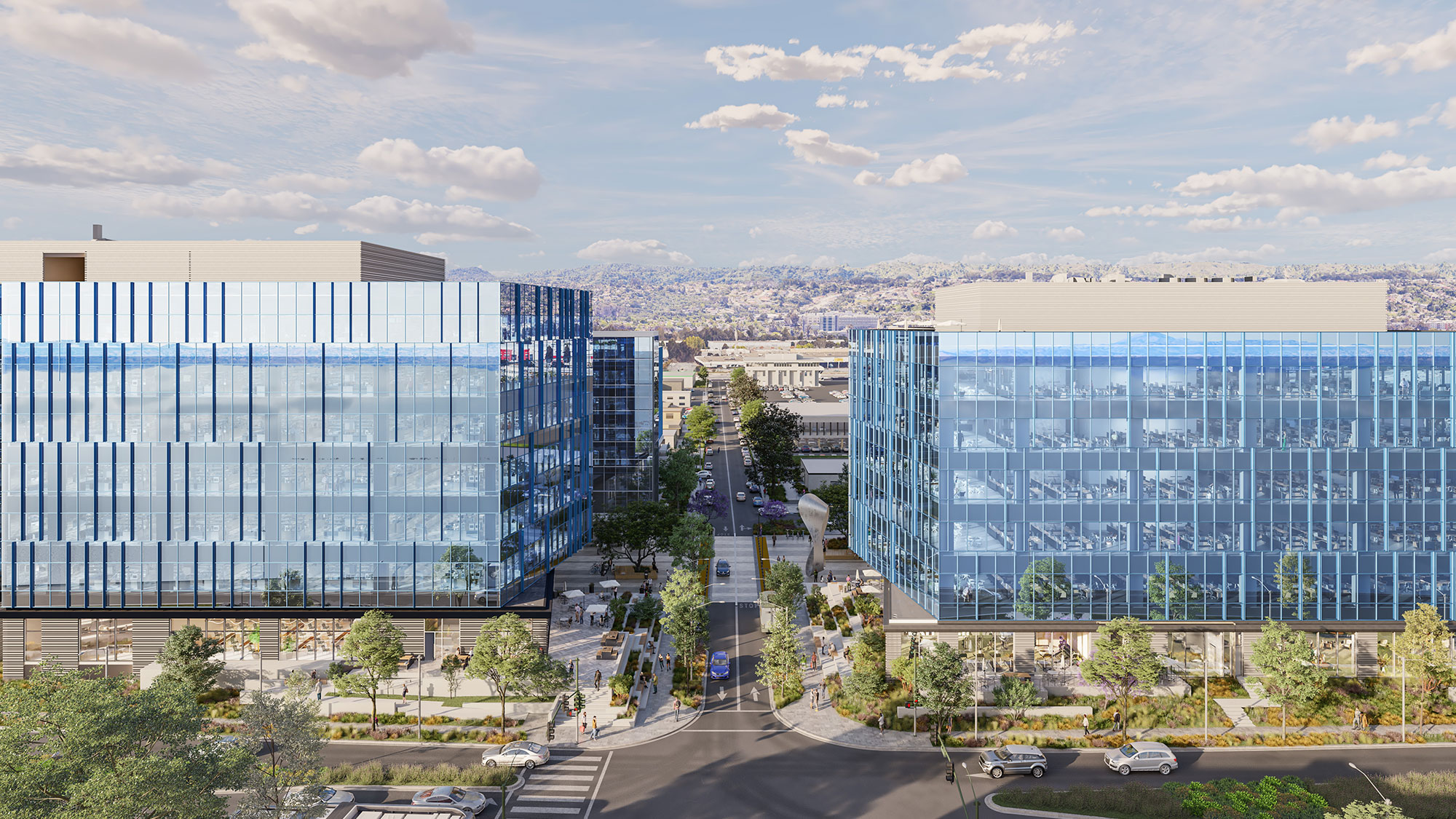Despite the Covid-19 pandemic driving the need for biotech space along a stretch of 101 Brisbane to San Carlos, Burlingame officials were surprised when life sciences developer King Street Properties came calling.
After all, the Boston-based company had little experience in the Bay Area despite its biotech focus. But the questions King Street raised about what’s allowed to be built along the city’s main bayside avenues caused Burlingame to reopen its future-looking general plan completed just a year before and update zoning, refine definitions and set new standards to accommodate biotech-focused research-and-development projects.
Two years later after the city completed those changes, it is awash with projects for stretches of Old Bayshore Highway and Airport Boulevard totaling 3.7 million square feet to date.
The plethora of projects, including two from King Street Properties and collaborator Helios Real Estate Partners, could remake the sleepy Bayshore Highway from a stretch of 1960s-era, low-lying offices, restaurants, hotels and limited retail into a new Peninsula submarket of high-rise biotech offices and labs.
But newbie Burlingame’s bayshore boom not only has competition from established submarket like South San Francisco and other cities along the Peninsula and in the East Bay but a challenge in trying to time the need for a recalibrating biotech industry.
As generalist investors have pulled out of life sciences post-Covid because of rising interest rates, companies’ intense capital needs and long drug-development timelines, drugmakers continue to struggle with a new reality. while strong clinical trials results are rewarded by investors because every met milestone reduces risk, others are cutting costs by paring drug programs, ditching jobs and shedding space.
A recent report from commercial real estate firm Transwestern showed a quarter-to-quarter increase in the Bay Area life sciences industry’s vacancy rate from 12.6% in the second quarter to 15.3% in the third quarter. Meanwhile, net absorption, or the change from the second to third quarters in occupied space that accounts for vacated space and newly constructed sites, was pegged at negative 588,000 square feet.
Although those figures should put pressure on landlords, the report said rents grew for the first time in four quarters by 2% to little more than $62 per square foot per year.
Of the 13 Bay Area projects of 250,000 square feet or more, five are in South San Francisco.
More buildings are to come if Burlingame’s pipeline pans out.
The bayshore projects include the staged, 1.4 million-square-foot Peninsula Crossing by DivcoWest that would swallow the iconic, long-abandoned Hyatt Cinema, Lincoln Property Co.’s redo of a site with a closed Red Roof Inn at Airport Boulevard and Anza Boulevard into a 13-story, 403,400-square-foot structure, and the conversion of a 3.7-acre airport parking lot along Anza Lagoon into two nine-story buildings totaling 481,660 square feet.
The first with a shovel in the ground is the Landing, a King Street project that includes a seven-story building and an eight-story structure totaling about a half-million square feet at 1669-1699 Bayshore Highway and 810 and 821 Malcolm Road.
“We certainly believe in the long-term life sciences industry and the Bay Area in general,” said Sonia Taneja, who heads up King Street’s new West region. “We could pull back now, but there are 20 times more diseases than there are cures. Those cures and treatments are being developed by companies here.”
The Landing, including a plaza, bay views, a tenant lounge and athletic center, was designed by Perkins & Will and being built by Hathaway Dinwiddie. It was topped off in September and will be ready for tenants in first-quarter 2025, Taneja said.
The second building will top off in January and open in the second quarter of 2025.
“We really felt Burlingame was an excellent location,” Taneja said. “It’s near decision makers, it’s near the workforce, it’s near transit and it’s near amenities.”
The Landing previously was the site of a food processor for San Francisco International Airport, a restaurant and a single-story industrial building.
Just down the street, at 1499 Bayshore Highway and Mahler Road, King Street and Helios plan a 304,354-square-foot building that is working its way through permitting.
King street, with 20 years of experience in life sciences on the East Coast, earlier this year also threw in with Brookfield Development to redevelop Pier 7o in San Francisco.
For Burlingame – like San Carlos a few years ago – the transition from old uses to biotech could add millions of dollars to its tax base as well as have developers fill gaps in segments of the Bay Trail address potential sea-level rise.
Bayshore Highway and Airport Boulevard parcels are larger than those in downtown Burlingame.
“It makes sense for that part of the city,” said Kevin Gardiner, the city’s community development director.
After the general plan was redone in 2019, city officials already were working on updating their codes when King Street asked how a biotech development would fit into the new plan, Gardiner said. King Street helped the Planning commission and City Council understand the needs of biotech buildings, including higher ceilings, different airflow demands and other nuances.
“This was all new to us,” Gardiner said. “The market came to the city and the city said, ‘This is something we can accommodate.'”
From Ron Leuty at San Francisco Business Times:
